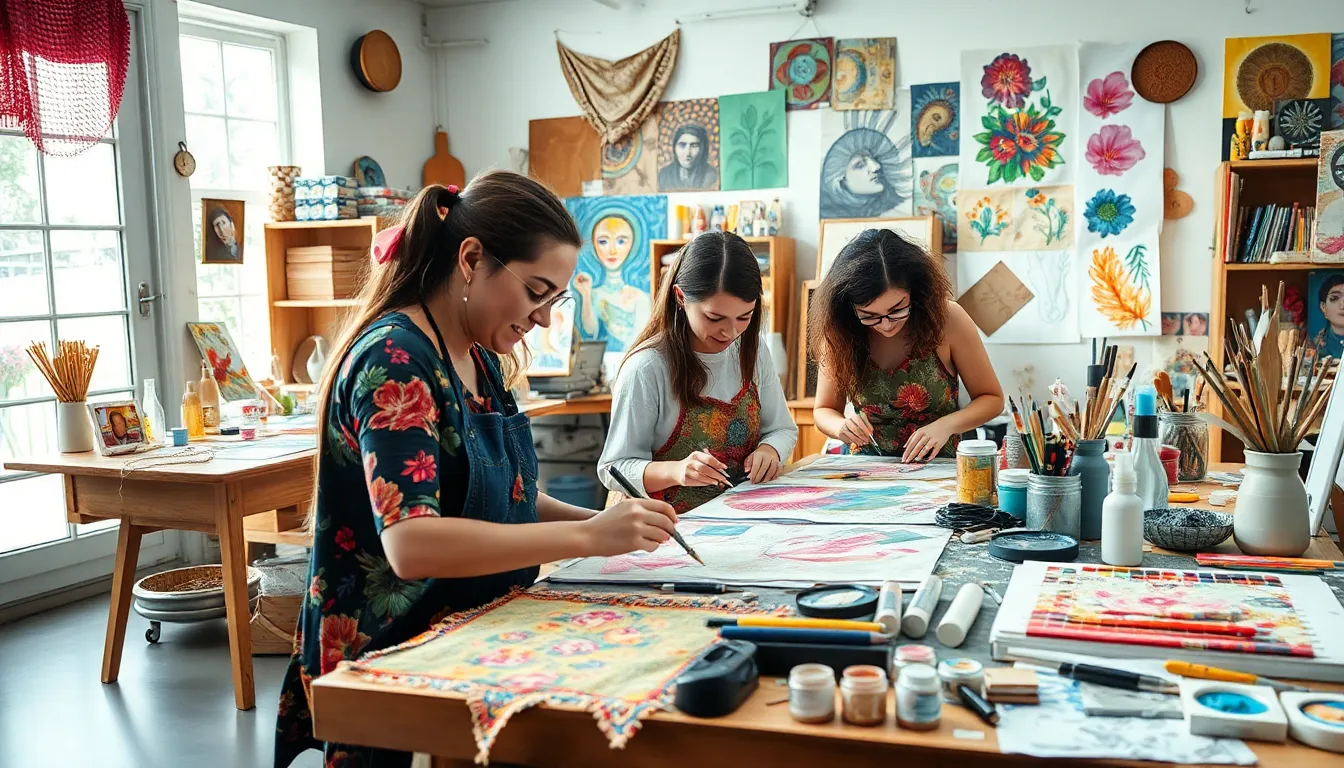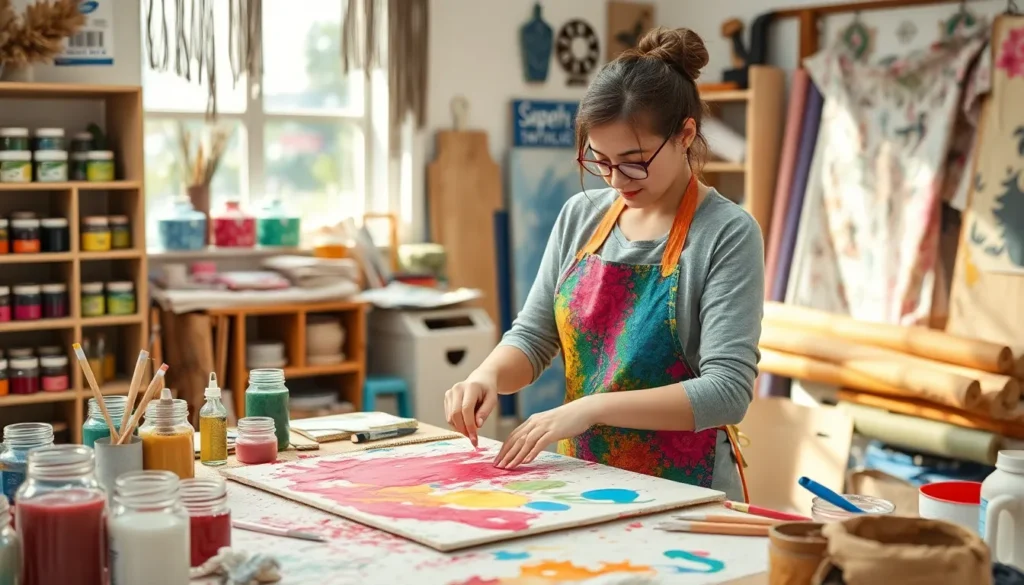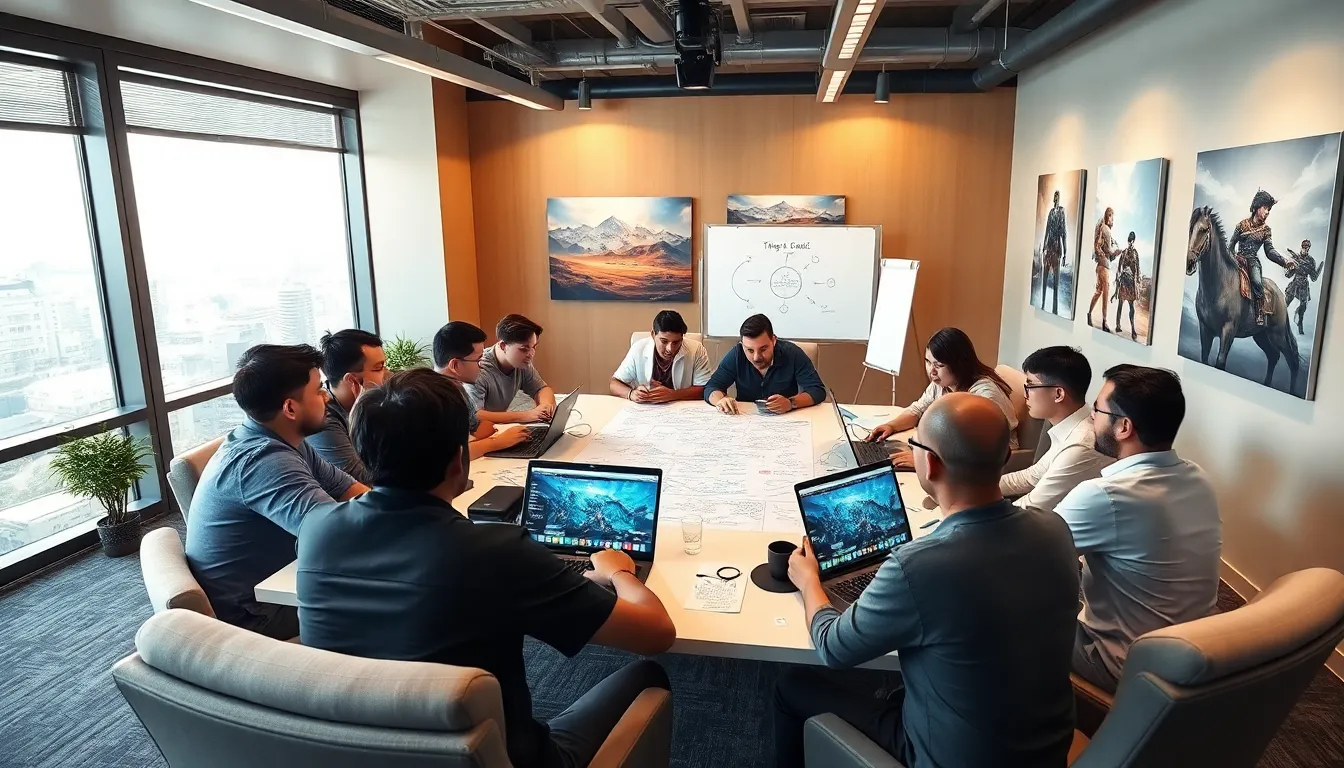In the ever-evolving world of crafting, aspect transfer crafting is the latest buzzword that’s got everyone talking. Imagine taking the essence of one medium and seamlessly blending it with another, creating something uniquely spectacular. It’s like a mad scientist’s lab for artists, where paint meets fabric and paper dances with wood.
This innovative technique not only sparks creativity but also transforms ordinary materials into extraordinary masterpieces. Whether you’re a seasoned crafter or just dipping your toes into the artsy waters, aspect transfer crafting promises a delightful adventure. So grab your glue and get ready to unleash your inner Picasso—because who wouldn’t want to turn everyday items into jaw-dropping works of art?
Table of Contents
ToggleOverview of Aspect Transfer Crafting
Aspect transfer crafting represents a fresh approach in the art world. This technique empowers artists to merge various mediums, including paint with fabric, and paper with wood. Such combinations yield distinctive creations that stand out. Flexibility marks this method, allowing craft enthusiasts to experiment freely with diverse materials.
Artists can personalize their work by rejecting traditional boundaries. This innovation cultivates a space where both experienced crafters and novices can thrive. Familiarity with different supplies enhances the crafting experience. New artists often discover surprising results by using unexpected combinations.
Experimentation holds a central place in aspect transfer crafting. For instance, using acrylic paints on textiles can result in vibrant designs unattainable through conventional methods. Incorporating textured papers into mixed media enhances visual appeal and depth. These approaches encourage further exploration and broaden artistic horizons.
Collaboration across mediums not only allows creativity but also introduces new techniques. Many crafters find that blending mediums fosters unique artistic voices. This method’s versatility invites individuals to turn everyday items into captivating art pieces. Encouraged by this emerging technique, many feel inspired to try their hands at crafting the extraordinary.
As more crafters embrace aspect transfer crafting, a community of innovative artists forms, leading to shared ideas and collective growth. This vibrant community celebrates creativity, driving continual exploration in the crafting domain.
Techniques and Methods

Aspect transfer crafting utilizes various techniques that enhance creativity and innovation within the art community. Different methods allow crafters to merge materials seamlessly, leading to unique artistic expressions.
Traditional Approaches
Traditionally, artists have employed decoupage, which involves layering paper cutouts onto surfaces. Applying varnish or glue seals these layers, creating a polished look. Mosaic techniques also contribute to this method, as they involve arranging small pieces of materials together to form a cohesive design. Stenciling remains a popular option, allowing for repeated patterns with clean edges. Utilizing fabric paints on natural fibers introduces another time-honored technique, yielding vibrant results that withstand washing. Each of these approaches fosters skills that translate well into aspect transfer crafting.
Modern Innovations
Modern innovations in aspect transfer crafting introduce exciting new materials and techniques. Digital printing technology revolutionizes how images transfer onto various surfaces, providing high-quality and detailed designs. Artists are exploring 3D printing, which enables the creation of unique shapes and forms that combine with traditional mediums. Additionally, fabric manipulation techniques, such as dye-sublimation, enhance color and texture in fabric crafting. Artists increasingly embrace mixed media assemblage, incorporating found objects alongside traditional materials. Experimenting with these innovations allows crafters to push boundaries further, creating extraordinary pieces that challenge conventional artistry.
Applications of Aspect Transfer Crafting
Aspect transfer crafting finds applications in multiple fields, enhancing creativity and innovation. This technique not only bridges various mediums but also opens doors for unlimited possibilities in artistic expression.
In Art and Design
Artists leverage aspect transfer crafting in their projects by merging diverse materials. Techniques like layering paint on textiles create depth in visual designs. Designers often incorporate printed imagery on canvas or wood, achieving captivating mixed media effects. Using unconventional items, such as reclaimed materials, adds sustainability to the art movement. Many artisans find inspiration in daily objects, transforming them into stunning focal points. This method challenges traditional art forms while encouraging experimentation. Therefore, it cultivates a space for originality and personalized creativity.
In Technology and Software Development
In the realm of technology, aspect transfer crafting influences software design and product development. Developers apply the principles of this technique to create hybrid applications that integrate varying functionalities. Collaborative approaches emerge, empowering teams to combine coding languages and frameworks seamlessly. User interfaces benefit from aesthetic elements that draw from traditional crafting methods, elevating the overall user experience. Moreover, digital art tools that allow for blending craft and technology expand creative potential. As a result, the crafting community continually evolves alongside advancements in software, pushing artistic boundaries further.
Benefits and Challenges
Aspect transfer crafting offers several advantages for artists. This technique encourages creativity by blending mediums, leading to visually striking results. Artists readily experiment, which fosters a supportive community that thrives on innovation. Merging traditional and modern approaches enriches the artistic process, allowing for unique expressions that stand out in the crafting world.
Flexibility in material choice plays a crucial role. Crafters utilize diverse items, turning everyday objects into art, while sustainability remains a priority. Using reclaimed materials not only reduces waste but also adds character to artworks. This practice aligns with eco-friendly trends, appealing to environmentally conscious creators.
However, challenges exist within this innovative craft. Mastery requires learning various techniques, which can be daunting for beginners. Balancing multiple mediums demands time and patience, leading to potential frustration. Moreover, integrating different materials may result in unexpected outcomes that don’t always align with the creator’s vision.
Time management becomes essential in maintaining progress. As crafters dive deeper into this method, finding the right balance between experimentation and refinement may prove difficult. Access to quality materials also poses a challenge, particularly for those in remote areas. Limited resources can hinder some artists from fully embracing the potential of aspect transfer crafting.
Understanding both benefits and challenges is vital for success in aspect transfer crafting. Embracing creativity while navigating obstacles allows artists to develop their skills and expand their boundaries. This dynamic approach to crafting yields exciting opportunities for those willing to explore its depths.
Future Trends and Developments
Emerging trends in aspect transfer crafting indicate a shift towards digital integration. Artists increasingly utilize technology, such as augmented reality, to enhance their creative processes. Innovations in materials, like biodegradable paints and eco-friendly adhesives, promote sustainability, appealing to environmentally conscious crafters.
Collaboration remains pivotal in the evolution of this technique. Artists share ideas and techniques through online platforms, fostering a thriving global community. Workshops and interactive forums encourage experimentation, allowing creators to learn from one another and inspire fresh ideas.
Furthermore, educational institutions are incorporating aspect transfer crafting into art curricula. Students develop skills in blending various mediums, preparing them for careers in diverse creative fields. This academic endorsement highlights the technique’s growing acceptance and relevance.
Emerging trends also include the rise of workshops dedicated to specific techniques within aspect transfer crafting. These sessions enable crafters to refine their skills, from advanced decoupage to intricate fabric manipulation. Crafters gain hands-on experience while receiving personalized guidance from experienced instructors.
Lastly, the market for aspect transfer crafting supplies is expanding. New brands focus on quality, offering tools and materials specifically designed for this innovative technique. The increased availability of specialized products enhances the crafting experience, empowering artists to create extraordinary pieces.
Aspect transfer crafting opens up a world of artistic possibilities. By blending different mediums and embracing innovation, artists can transform everyday materials into captivating artworks. This technique not only fosters creativity but also promotes sustainability through the use of reclaimed items.
As the crafting community grows, collaboration and experimentation thrive. Artists inspire each other to push boundaries and explore new ideas. With the integration of technology and educational initiatives, aspect transfer crafting is set to evolve further.
For anyone looking to enhance their artistic journey, diving into aspect transfer crafting offers an exciting opportunity to create unique pieces that reflect personal style and vision. Embracing this dynamic approach can lead to extraordinary results in the ever-evolving world of art.





